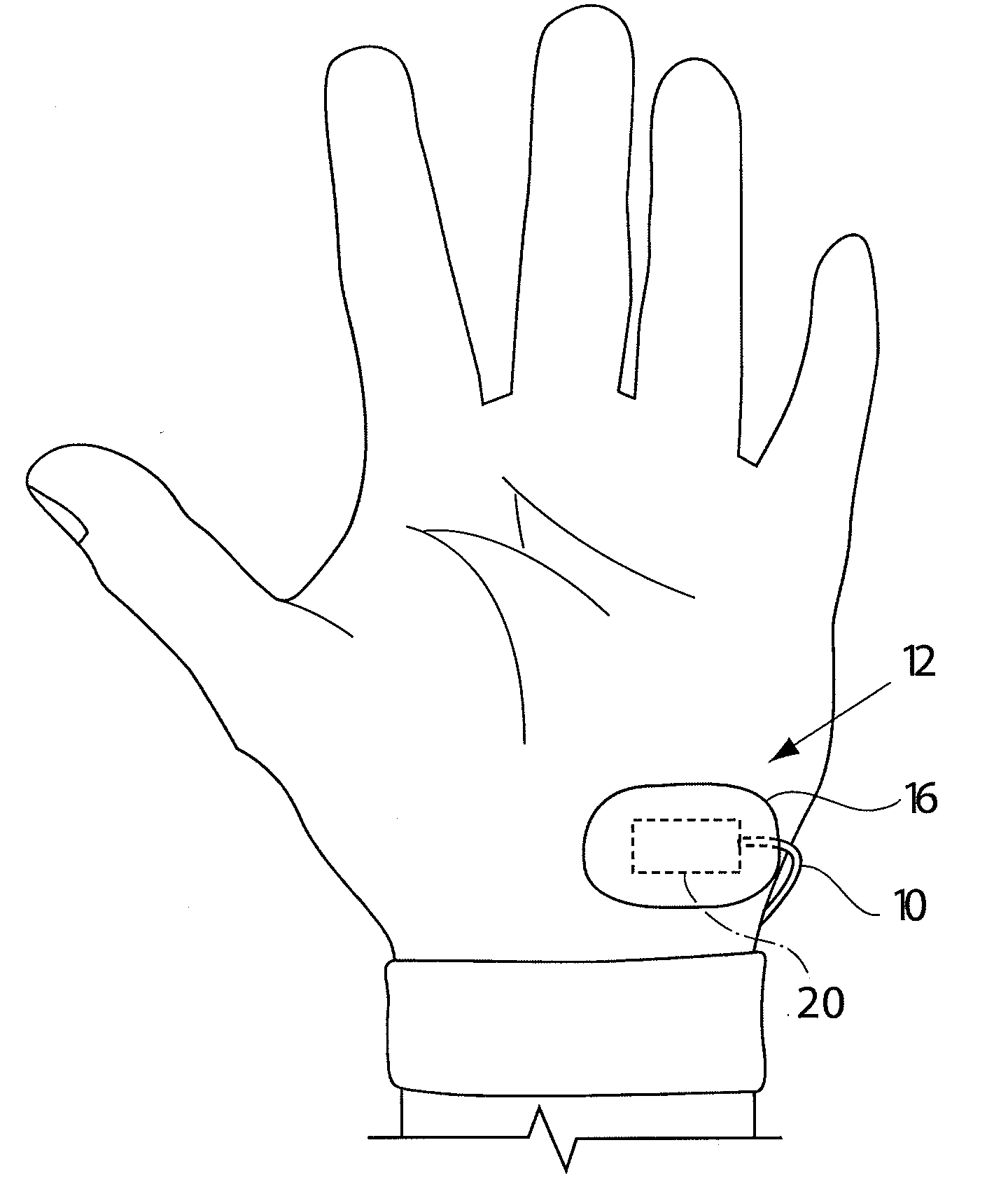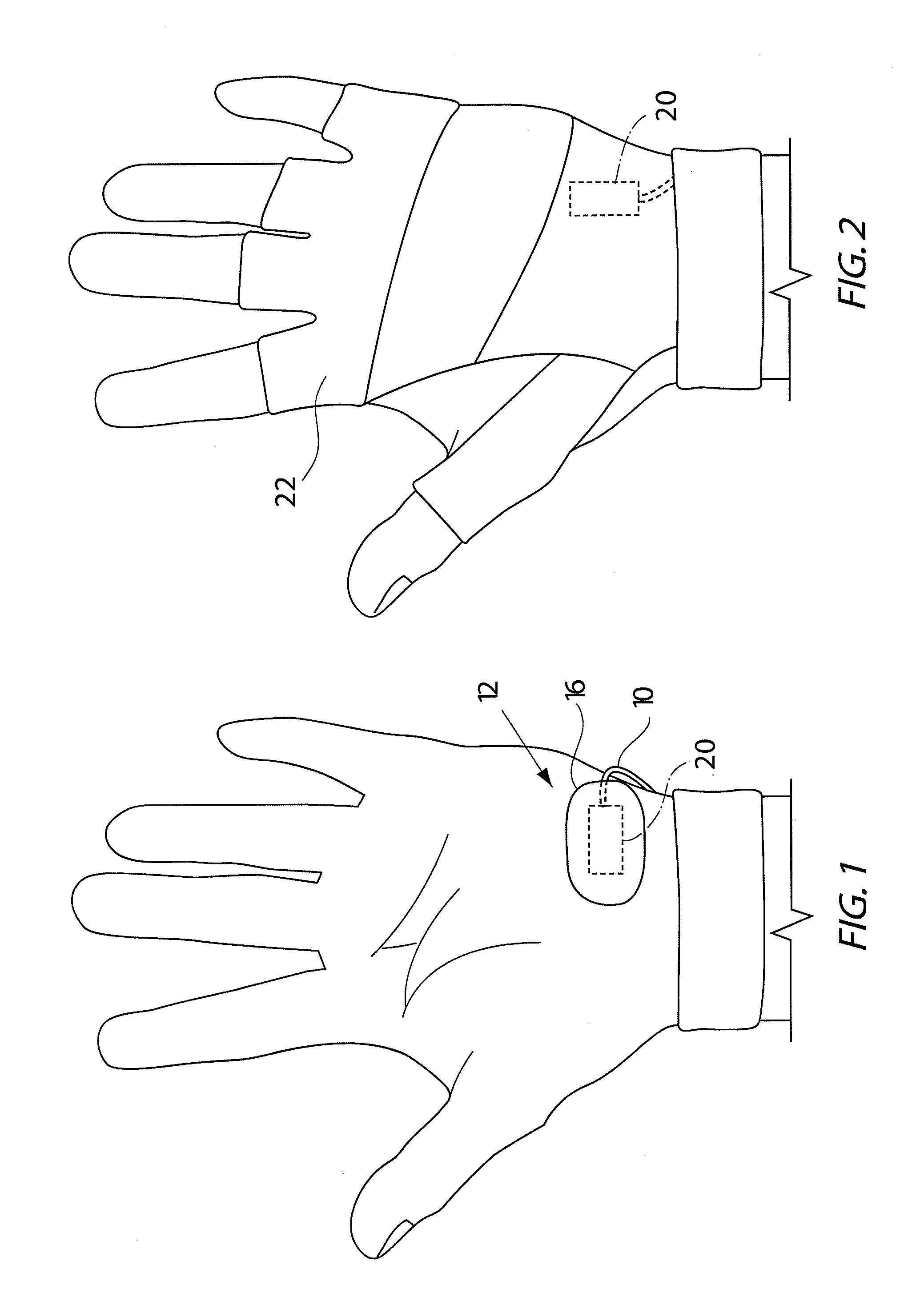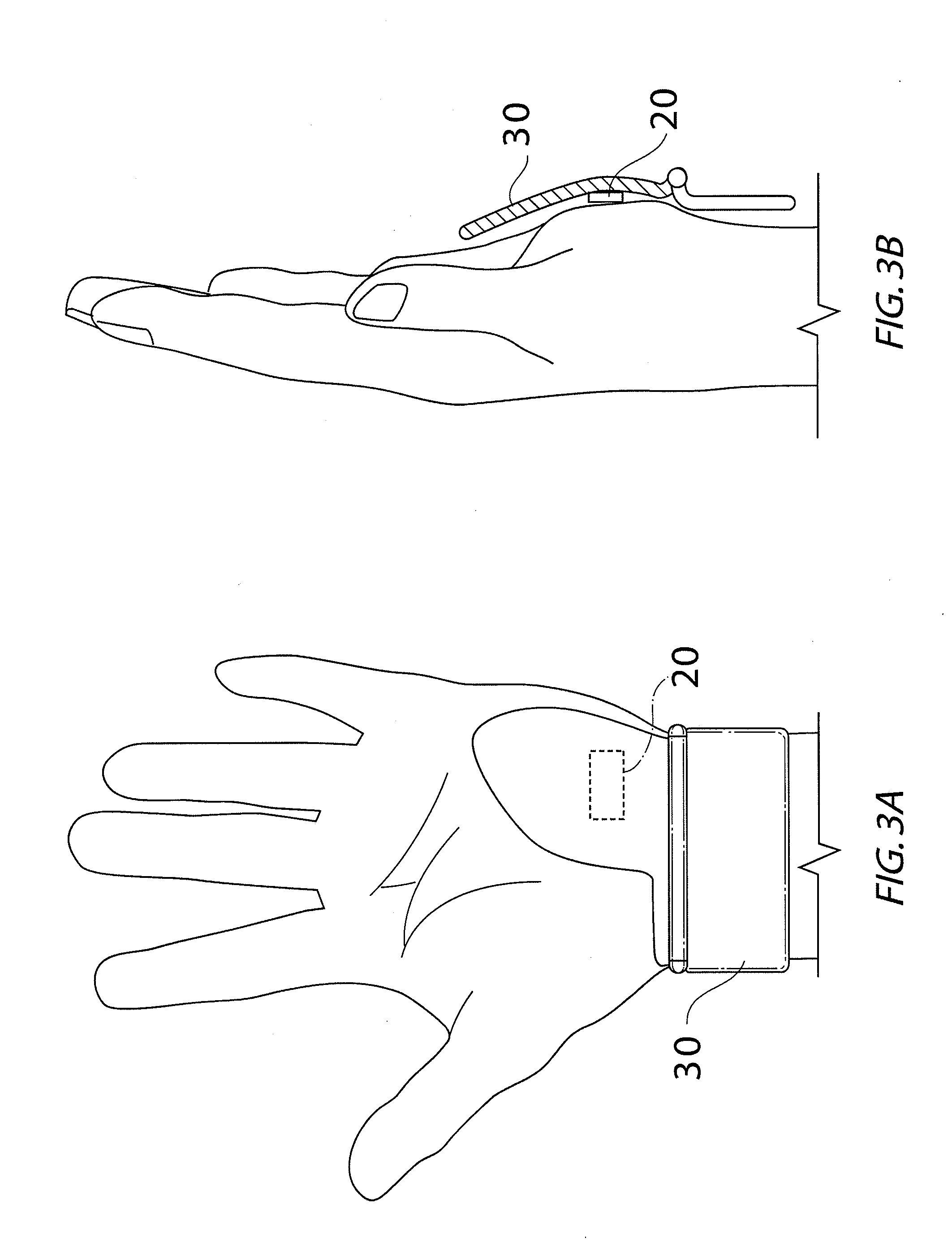Hypothenar sensor
a hyperthenar sensor and sensor technology, applied in the field of hyperthenar sensors, can solve the problems of physical motion, radial artery trauma, and decrease in pulse signal quality
- Summary
- Abstract
- Description
- Claims
- Application Information
AI Technical Summary
Benefits of technology
Problems solved by technology
Method used
Image
Examples
Embodiment Construction
[0031]In one embodiment, the present invention relates to an arterial pulse sensor located over the hypothenar region of a person's hand. The soft tissue over the hypothenar region cushions the pulse sensor and protects the underlying ulnar artery. The pulse sensor is a photoplethysmographic (“PPG”) sensor and is able to acquire good arterial pulse signal from this region. A PPG sensor uses light able to penetrate tissue to depths of several millimeters, sensing a pulse from the ulnar artery under the cushioning soft tissues of the hypothenar area.
[0032]Effectively positioning the pulse sensor over the hypothenar region requires that the sensor be applied to that area in a manner that maintains consistent contact between the sensor and the skin surface. A hold down force perpendicular to the skin surface is helpful in optimizing signal quality.
[0033]Referring initially to FIGS. 1 and 4a to 4e, the hold down force in one embodiment is provided by an adhesive patch indicated generally...
PUM
 Login to View More
Login to View More Abstract
Description
Claims
Application Information
 Login to View More
Login to View More - R&D
- Intellectual Property
- Life Sciences
- Materials
- Tech Scout
- Unparalleled Data Quality
- Higher Quality Content
- 60% Fewer Hallucinations
Browse by: Latest US Patents, China's latest patents, Technical Efficacy Thesaurus, Application Domain, Technology Topic, Popular Technical Reports.
© 2025 PatSnap. All rights reserved.Legal|Privacy policy|Modern Slavery Act Transparency Statement|Sitemap|About US| Contact US: help@patsnap.com



